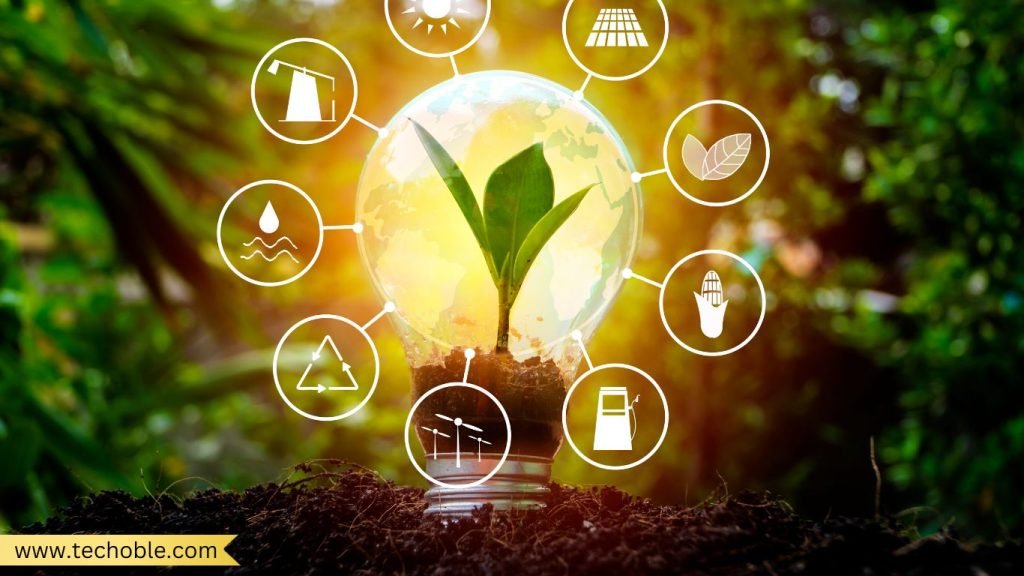 Smart home technology is growing faster than ever. In 2025, the focus shifts to better integration, sustainability, security, and personalization. With AI-driven devices, energy-saving innovations, and cross-platform solutions like Matter, the year promises significant changes in how we live. This article dives into the latest smart home trends in 2025, providing insights into what you can expect, the statistics driving these innovations, and why these developments matter.
Smart home technology is growing faster than ever. In 2025, the focus shifts to better integration, sustainability, security, and personalization. With AI-driven devices, energy-saving innovations, and cross-platform solutions like Matter, the year promises significant changes in how we live. This article dives into the latest smart home trends in 2025, providing insights into what you can expect, the statistics driving these innovations, and why these developments matter.
Enhanced AI and Voice Assistance for Smarter Living
Artificial Intelligence (AI) is now at the heart of smart homes. In 2025, AI voice assistants are smarter, more personalized, and better integrated with daily routines. Virtual assistants such as Alexa, Siri, and Google Assistant can now understand complex commands and offer proactive solutions.
Examples of AI Integration
- AI Scheduling: Devices recommend personalized schedules based on user habits.
- Predictive Responses: Assistants detect patterns and suggest actions (e.g., turning off lights when you leave).
- Voice Recognition: Individual voice profiles offer tailored experiences for each user.
Fun Fact:
Did you know that by 2025, over 70% of smart home users use AI-based assistants daily? This reflects the growing comfort with hands-free device management.
Matter Update 2025: Universal Compatibility Across Devices
Inconsistent device compatibility is now a thing of the past, thanks to the Matter protocol. Matter ensures seamless communication between smart home devices, regardless of the brand.
How Matter Improves User Experience
- Single Hub Control: Manage all devices from one app or hub, whether it’s Google, Apple, or Amazon.
- Future-Proofing: Devices with Matter certification will be compatible with future smart home technologies.
Statistics:
Over 80% of new smart home devices in 2025 will support the Matter protocol, eliminating the need for multiple apps and systems.
Energy-Saving Innovations and Sustainability
Sustainability is a driving force for smart home updates in 2025. Devices now offer better energy management, reducing costs and environmental impact. Smart homes are not only about convenience but also about creating energy-efficient spaces.
Smart Home Energy-Saving Statistics
- Smart Thermostats: Can cut energy bills by 15% to 20% annually.
- Automated Lighting Systems: Save energy by turning off lights when rooms are empty.
- Solar-Integrated Appliances: Allow households to generate and store their own electricity.
Popular Energy-Saving Devices in 2025
| Device | Feature | Energy Savings |
|---|---|---|
| Smart Thermostats | Auto-adjusts temperature | 15-20% annually |
| Smart Power Strips | Reduces standby power | 5-10% per year |
| Solar Panel Chargers | Off-grid charging options | Up to 50% in costs |
| EV Chargers at Home | Smart scheduling for EVs | Reduces peak usage |
Pro Tip:
Switching to a Matter-enabled thermostat will ensure better compatibility with solar systems and other smart home devices in 2025.
Advanced Home Security and Privacy Improvements
Smart home security systems are becoming more sophisticated in 2025, with new AI-powered surveillance tools and biometric security. With rising concerns about cyber-attacks, privacy-focused devices are also gaining popularity.
New Features in Home Security Systems
- AI Cameras: Detect unusual movements and alert homeowners instantly.
- Facial Recognition Locks: Only allow access to authorized individuals.
- Cybersecurity Upgrades: Encrypt data to prevent hacking.
Smart Home Statistics:
A recent report shows that 67% of smart home users prefer devices with biometric security. Additionally, smart security system adoption is expected to grow by 10% annually.
Smart Home Device Trends in 2025: Personalized and Practical
Smart home users are looking for devices that offer convenience and personalization. The latest smart home device trends emphasize user-centric design and ease of use.
Popular Trends in Smart Home Devices
- Smart Appliances: Connected ovens, fridges, and washers allow remote monitoring and control.
- Health Monitoring Systems: Devices like air purifiers and smart beds track health metrics.
- Immersive Entertainment: Smart TVs and audio systems integrate with virtual reality (VR) headsets for interactive experiences.
Interesting Fact:
Smart home users by age show an increasing adoption rate among older adults. In 2025, 30% of users are above 55, thanks to health-focused devices and easy-to-use systems.
Interoperability with Matter Devices 2025
The Matter update ensures smooth communication across multiple devices and brands. With this protocol, users no longer worry about compatibility issues when adding new devices.
Benefits of Using Matter Devices in 2025
- Universal Setup Process: One-time setup for all connected devices.
- Flexible Control: Manage everything via a single app.
- Long-Term Support: Future devices will remain compatible with Matter-certified products.
Health-Focused Smart Home Solutions
Health technology is becoming an integral part of smart homes. Devices now monitor air quality, sleep patterns, and even detect falls in elderly individuals. This trend ensures that smart homes cater to users’ well-being and safety.
Examples of Health Monitoring Devices
- Smart Air Purifiers: Measure and adjust air quality based on pollution levels.
- Sleep Monitors: Track sleep stages and suggest ways to improve rest.
- Fall Detection Sensors: Send alerts to caregivers or emergency services during falls.
Immersive Entertainment: AR/VR and Smart Home Systems
Entertainment is evolving beyond smart TVs. In 2025, augmented reality (AR) and virtual reality (VR) play a significant role in home entertainment. Smart projectors, immersive sound systems, and VR headsets make home entertainment more engaging.
Trend:
Smart home users are now using AR apps to visualize furniture placement and design changes before making purchases.
Challenges for Smart Homes in 2025
While smart homes offer numerous benefits, some challenges remain. Addressing these issues is crucial to improving user adoption and satisfaction.
Key Challenges
- High Costs: Advanced devices come with a hefty price tag, limiting access for some households.
- Privacy Concerns: Users worry about data collection and cybersecurity threats.
- Complexity: Some devices may be too complex for non-tech-savvy users.
Did You Know?
Surveys show that 45% of users are concerned about the privacy of their data in smart home devices, indicating the need for stronger security measures.
Smart Home Users by Age: Adoption Trends
Understanding the demographics of smart home users can help predict future trends.
Adoption Rates by Age Group
- 18-34 Years: Early adopters, drawn to entertainment and convenience features.
- 35-54 Years: Focus on security and energy management.
- 55+ Years: Increasing interest in health monitoring systems and easy automation.
The smart home trends in 2025 emphasize energy efficiency, AI integration, enhanced security, and cross-platform compatibility. With the Matter update 2025, users can enjoy a more seamless experience across all devices. Smart homes are no longer a luxury—they are becoming a necessity. As adoption increases across all age groups, we can expect even more innovative developments in the coming years.
Frequently Asked Questions (FAQ)
What are the biggest smart home trends in 2025?
- AI-powered devices, energy-saving systems, and Matter compatibility lead the trends.
What is the Matter update 2025?
- The Matter protocol ensures seamless communication between devices from different brands.
What are smart home energy-saving statistics?
- Smart thermostats save 15-20% annually, and automated lighting systems cut energy waste significantly.
Who uses smart home devices the most?
- The 18-34 age group leads in adoption, but older adults are catching up due to health-focused features.
